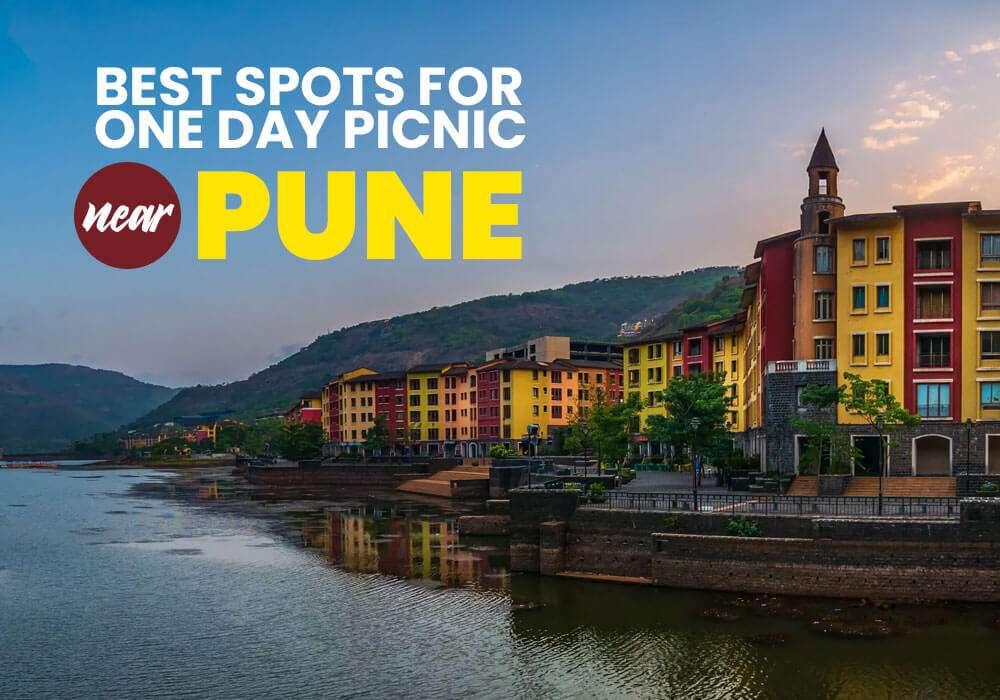
Last Updated At: 29-May-2024
Traditions and Culture Of Goa
Goa, known as the ‘Rome of the East’', is famous for heavenly beaches, architectural marvels of 17th Century churches, spice plantations, and vibrant cultural tapestry. This beautiful state on the Indian western coast was ruled and inhabited by the Portuguese for over 450 years, and the Portuguese influence in Goa is evident all across.
A historically significant trade centre, Goa perfectly harmonises East and West. Goans are known for warm hospitality. Goa offers a harmonious mixture of religions and respect for traditions and festivals. Despite rapid urbanisation, the cultural heritage of Goa has not been tarnished, and Goans preserve their custom and unity in diversity close to their hearts. There is something for everyone in Goa. Come and explore the culture of Goa beyond beaches and nightlife.
Let us dive into the depth of the beautiful culture of Goa.
Goa Culture And Tradition
The Modern and Traditional Festivals of Goa
Goa, the beachy heaven, celebrates several festivals throughout the year attended by locals and tourists in lakhs every year. Goa Carnival is among the most famous traditional festivals of Goa. It is celebrated for three days and three nights, preceded by Lent (February). Shishir Utsava, or Sigmo, is a famous Hindu festival celebrated in March. The festival began to honour the warriors who returned home after fighting invaders. Other prominent contemporary and traditional festivals of Goa are Vasco Saptah, Bonderam Festival, Goa Mango Festival, Sao Joao Festival, Goa Cashew and Coconut Festival, Goa Food and Culture Festival, and Grape Escapade.
Phenomenal Art and Craft of Goa
The art and craft of Goa illustrate the perfect example of unity in diversity, a crucial part of Goan heritage. Thus, you can explore Hindu craftsmen chiselling out Christian art. Goan art reflects the process of religious and cultural assimilation, interdependence and mutual acceptability.
Goa also offers multiple manifestations of Christian art and craft, the possible impact of over four centuries of Portuguese rule. The State houses Asia’s first Museum of Christian Art at Rachol Seminary in Salcete Taluka.
Primary art forms in Goa are woodcarving, bamboo craft, seashell craft, papier-mache, wooden lacquerware, brass metals, fibre stone carving, coconut shell carving, and more. You can also explore creative pottery, brass work, and innovative handicrafts and bring home souvenirs from Goa.
Read More : Famous Beaches of Goa
The Incredible Folk Music of Goa
Goan music and dance are in the DNA of people in Goa. The Western influence is evident in the traditional folk music of Goa. From streets and pubs to fests, you can experience unique Goan music, combining Portuguese and Konkani lyrics. You can drive to a rural part of Goa to listen to the real folk music of the State. Music being part of Goan culture, it will provide a taste of the culture of Goa.
Some of the prominent traditional music of Goa include Mando Suvari, Dhallo, Duvallo, Ovi, Trance and more. Visit Goa, feel the rhythm and live the vibe.
Traditional Dance of Goa
As mentioned above, Goan music and dance are integral parts of people’s lives here. You can explore unique and beautiful dance forms in Goa that reflect the State's rich cultural diversity. Ghode Modini is among the most famous folk dances in Goa. The dance form includes dancers in warrior uniforms, tucked dummy horses around their waists, and swords in their hands. Dhangar dance is one of the prominent religious folk dances. Traditional shepherd community Dhangars perform this dance to please the folk God Bhira Deva.
Other prominent traditional dance forms of Goa are Lamp dance, Dekhni, Goff Talgadi, Shigmo, Mussel Khel, etc. These are among the key tourist attractions in Goa to witness in person and bring home some excellent memories.
Read More : Places To Visit In Goa
Astounding Attire of Goa
Goans are known for their distinctive dressing style and vibrant, colourful pattern. It is a symbol of the beautiful cultural heritage of Goa. The popular traditional dress for Women in Goa is ‘Pano Bhaju’. It is a 9-yard sari, and women wear jewellery to enhance the outfit's appearance. Tribal people in Goa wear a loincloth known as ‘Kashti” with a blanket around them.
The fishermen's community does not have any specific costumes. However, they wear bright cotton shirts and half-pants mostly. They also wear hats made of bark bamboo bark. Another popular costume of women in Goa is the ‘Kunbi Palloo’. It is a unique traditional sari style with a tied knot.
Colorful Goan shirts are must-have souvenirs; you should include them in your shopping after an outing on one of the sun-kissed beaches.
Paradisiacal Customs of Goa
Goans have a specific fondness for their customs and culture. Diverse religions have co-existed here and evolved over centuries with respect for each other’s customs. The impact of Portuguese rule and the co-existence of Hindus, Christians, Muslims and other religions are evident in differences across Goan life and practices.
Despite embracing modernity and Portuguese influence on Goa in every aspect, people in Goa respect and preserve Hindu traditions and customs. Some of the oldest Hindu temples lie in Goa. Respect for women and the safety of beachgoers are significant for Goans. Nudity is prohibited on the beaches of Goa.
Delectable Goa Cuisine
The cuisine is the perfect reflection of cultural diversity. Goan cuisine is one of the best examples of the same. You can experience the taste of diversity with the delectable food of Goa. Some prominent dishes for foodies in Goa are Bebinca, Pork Vindaloo, Goan Fish Curry, Chicken Cafreal, Chicken Xacuti and more. After relaxing on a beach, taste delicious seafood and famous Goa cuisine.
Heritage Jewellery of Goa
Beyond laid-back pristine beaches, historical monuments, and seafood, Goa is known for unique traditional jewellery. Konkani people are known for their unique jewellery design and range of jewellery pieces for almost every body part. You can shop classic bridal jewellery, contemporary designer jewels, and gemstone studded ones. The Daivadnya Brahmins, skilled in designer jewellery, introduced Goan heritage jewellery to the world.
So, if you are looking for authentic Konkani jewellery shopping, you know where to visit.
Ethnic Diversity of Goa
The cultural heritage of Goa boasts a significant tapestry of cultural diversity. Different ethnic and religious communities have co-existed and thrived together for centuries. The marks of unity in diversity are evident in customs, language, festivals, food, attire, and almost everywhere. The ethnic fabric of Goa comprises the Konkani people, Marathi community, Goans (demonym for native people in Goa), Saraswat Brahmin, Karwari Catholics and several indigenous groups.
Read More : Best Things To Do In South Goa
Intrigued to experience the vibrant culture of Goa? What’s stopping you? Visit Adotrip.com and embark on a journey that will leave you spellbound. Book your adventure now!
We offer customized packages to explore Goa, its culture, people, art, history, and architecture. Our curated tour packages ensure fun and comfort. You can explore premium services to avail of amazing deals and discounts. Book flights, hotels, buses, and trains with us and explore the cultural heritage of Goa like never before.
With us, Nothing is far!
Book Packages In Goa
Frequently Asked Questions About Culture Of Goa
Q1. What are the major cultural festivals celebrated in Goa?
A1. Some of the significant cultural festivals celebrated in Goa are-
- The Goa Carnival
- Sao Joao
- Ganesh Chaturthi
- Christmas
- Easter
- Shigmo
- Samvatsar Padvo
Q2. Can you tell me about the traditional dance forms and music genres of Goa?
A2. Some of the prominent traditional Goan music and dance forms are-
- Goa Trance
- Psychedelic Trance
- Nitzhonot
- Fugdi
- Ghode Modni
- Dashavatara
- Dekhni
- Dhangar
- Shigmo
Q3. How does Goa celebrate its regional and religious festivals?
A3. There are so many tourist attractions in Goa besides beaches, seafood and music fests. Goans celebrate several religious and cultural festivals with pomp and glory. Lakhs of travellers and locals attend these festivals every year.
Q4. Are there any unique art and craft forms that represent Goa's culture?
A4. Some of the unique art and craft forms that represent an aesthetic combination of Indian and Portuguese culture are-
- Pottery and Terracotta work
- Brass Metal Work
- Wooden Lacquerware
- Crochet and Embroidery
- Jute Macrame Craft
Q5. What are some famous folk tales and folklore associated with Goa?
A5. Some of the popular folk tales and folklore associated with Goa are-
- The Wise Fools of Moira
- The Story of Brahma Karmali Idol
- The Folk Tale of Kule-baka Flowers
- The Brahmin Outwitted
- The Fox and the Crocodile
Q6. How does Goan cuisine reflect its cultural identity?
A6. Some of the prominent Goan cuisines that reflect the cultural heritage of Goa are-
- The Vindaloo
- Sol Kadhi
- Sorpotel
- Caldin
- Xacuti
- Balchao
Q7. Can you tell me about the traditional attire and jewellery worn in Goa?
A7. Some of the famous traditional attire of Goa-
- Pano Bhaju
- Kashti
- Kunbi Palloo
- Some of the popular traditional jewellery of Goa-
- Bajubandh
- Goth
- Piddukachi Kakna
- Coin Bangles
- Pichodi
- Tode
Q8. Are there any specific rituals or customs followed in Goan cultural practices?
A8. Some of the specific rituals or customs followed in Goan cultural practices are-
- Gade ritual during the Shigmo festival
- Chor Utsav or Chor Purne
- Homekund or Fire Rituals
Q9. How does the Portuguese influence impact the cultural heritage of Goa?
A9. Portuguese ruled and inhabited the Goa region for almost 450 years. Portuguese influence in Goa is evident in culture, festivals, architecture, art and craft and almost every aspect of Goan life.
Q10. Can you recommend some cultural events or festivals to experience in Goa?
A10. Some of the recommendable cultural events or festivals to experience in Goa are-
- The Goa Carnival
- Sao Joao
- Ganesh Chaturthi
- Christmas
- Easter
- Shigmo
- Samvatsar Padvo
--- Published By Adotrip
Latest Blogs

Cash in the Wild: My Safari Adventure Across Kenya with Only...

One Day Picnic Spot Near Pune - Adventure, Trekking and Natu...

One Day Picnic Spots Near Mumbai - Monsoon, Adventure, Beach...

The Best Places to Go in Thailand in 2025












.jpg)


 Dubai
Dubai Malaysia
Malaysia USA
USA





